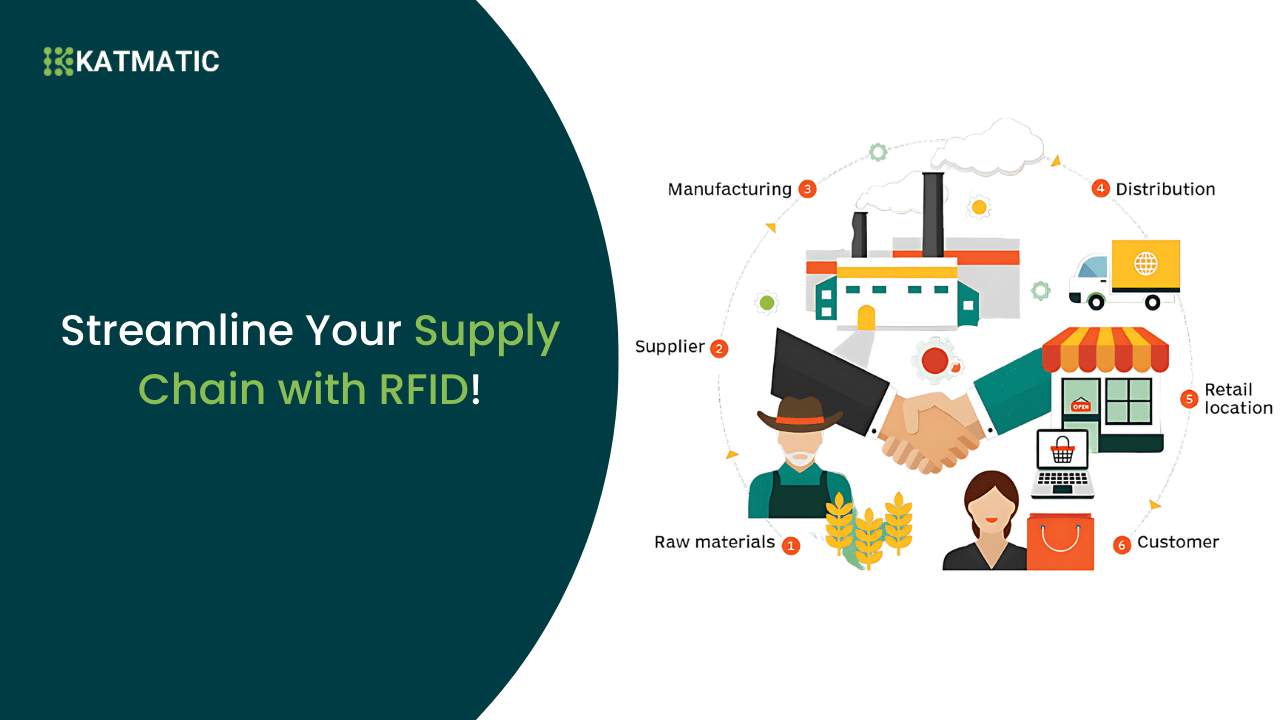Table of Contents
In today’s fast-paced business world, having a good supply chain management system is key. It helps make operations run smoother, keeps customers happy, and supports long-term growth. This guide will give you a clear view of what supply chain management systems are all about. You’ll learn about their main parts and how they can make your business run better. We’ll cover topics like managing inventory, improving logistics, and using data to make smart choices. By the end, you’ll know how to boost your supply chain and find new ways to succeed.

Key Takeaways
- Understand the core concepts and evolution of supply chain management systems
- Explore the key components of an effective supply chain management system
- Learn strategies for optimizing inventory management and enhancing logistics
- Discover the power of data analytics and its role in supply chain optimization
- Explore the integration of supply chain management with enterprise resource planning
- Recognize the importance of supply chain management in driving customer satisfaction and business growth
- Stay informed about emerging trends and technologies shaping the future of supply chain management
What is a Supply Chain Management System?
A supply chain management system helps manage the flow of goods, services, and information. It covers planning, coordination, and optimization from start to finish. This includes everything from getting materials to making products to delivering them to customers.
Understanding the Core Concepts
At the core of a supply chain system are key ideas that work together for better operations. These ideas include:
- Integrated Logistics: This means coordinating how goods move, are stored, and get to customers.
- Inventory Management: It’s about keeping the right amount of stock to meet customer needs without wasting resources.
- Demand Forecasting: This is predicting what customers will want in the future to plan better.
- Supplier Relationships: Building strong partnerships with suppliers to get reliable and quick supplies.
- Process Automation: Using technology to make supply chain tasks easier and less prone to mistakes.
The Evolution of Supply Chain Management
Supply chain management has changed a lot over time. This change is thanks to new technology, global markets, and what customers want. It has moved from simple, separate steps to complex, connected systems. This keeps up with the fast-changing business world.
| Era | Focus | Key Developments |
|---|---|---|
| 1950s – 1980s | Functional Silos | – Fragmented approach to logistics and distribution – Limited integration between departments |
| 1980s – 1990s | Integrated Logistics | – Coordination of transportation, warehousing, and inventory – Emergence of enterprise resource planning (ERP) systems |
| 1990s – 2000s | Global Supply Chains | – Expansion of supply networks across borders – Increased focus on supplier relationships and collaboration |
| 2000s – Present | Digitalization and Optimization | – Adoption of advanced technologies (e.g., IoT, AI, blockchain) – Data-driven decision-making and predictive analytics |
Thanks to its evolution, supply chain management has made companies more flexible, quick to adapt, and strong against changes. This helps them keep up with market shifts and customer needs.
Key Components of an Effective Supply Chain Management System
Creating a strong supply chain management system needs a deep knowledge of its main parts. These parts work together to make a supply chain that can handle today’s fast-paced business needs. Let’s look at the key parts that make up a good supply chain management system.
Inventory Management
Good inventory management is key to a successful supply chain. It means keeping the right amount of products, having them when needed, and cutting down on waste. Using just-in-time inventory and demand forecasting is very important here.
Logistics and Transportation
The logistics and transportation parts of a supply chain manage how goods move, from raw materials to finished products. This includes making the best routes, managing fleets, and combining different transport ways for quick and affordable delivery.
Data Analytics and Insights
A strong supply chain uses data analytics and insights to make smart choices. By using big data and advanced analytics, companies can spot trends, predict demand, and make their supply chains better.
| Supply Chain Management System Components | Supply Chain Management System Features |
|---|---|
| Inventory Management | Just-in-Time Inventory, Demand Forecasting |
| Logistics and Transportation | Route Optimization, Fleet Management |
| Data Analytics and Insights | Big Data, Predictive Analytics |
| Enterprise Resource Planning (ERP) Integration | Seamless Data Sharing, Improved Visibility |
By knowing and using these key parts, companies can create a supply chain system that meets their needs now and in the future. This leads to sustainable growth and success.
Optimizing Inventory Management with Supply Chain Management System
Effective inventory management is key to a successful supply chain. A supply chain management system helps businesses improve their inventory strategies. This leads to lower costs and happier customers.
Just-in-Time Inventory Strategies
A supply chain management system makes just-in-time inventory possible. This method keeps inventory levels low by ordering only what’s needed. It matches production with customer orders, cutting down on waste and storage costs.
Demand Forecasting and Planning
Forecasting demand is vital for a good supply chain plan. A well-designed system uses past data and trends to predict future demand. This helps businesses adjust their plans to meet customer needs without having too much inventory.
Using supply chain management system inventory optimization, just-in-time inventory, and demand forecasting helps streamline operations. It lowers costs and boosts supply chain planning skills.
“Effective inventory management is the foundation of a resilient supply chain. Supply chain management systems empower businesses to optimize their inventory strategies, reduce costs, and delight customers.”
Enhancing Logistics and Transportation with Supply Chain Management System
A strong supply chain management system is key to making your logistics and transportation better. It uses smart route planning and fleet management to make your deliveries faster, cheaper, and more efficient.
Revolutionizing Route Optimization
Advanced algorithms in a supply chain system look at lots of data. This includes traffic, delivery times, and how much each vehicle can carry. They create the best delivery routes. This cuts down on fuel use and costs, and makes sure deliveries are on time and reliable.
Empowering Fleet Management
A good supply chain system also changes how you manage your fleet. It uses GPS tracking, keeps track of vehicle maintenance, and looks at driver performance. This helps use your fleet better, cuts down on downtime, and keeps your transportation safe and efficient.
- Predictive maintenance to reduce breakdowns and prolong vehicle lifespan
- Automated dispatch and route planning to maximize resource utilization
- Driver behavior monitoring to promote safe and fuel-efficient driving practices
Using a supply chain management system for logistics and transportation can bring your business to new heights of success. It gives you a big edge in today’s fast-changing market.

Leveraging Data Analytics in Supply Chain Management System
In today’s world, supply chain management systems (SCMS) use data analytics to make better decisions. They combine big data and predictive analytics to find insights that help improve supply chain operations.
Big Data and Predictive Analytics
SCMS gather and analyze lots of data from sources like inventory, supplier performance, customer demand, and logistics. This data helps find patterns and trends that were hard to see before.
Predictive analytics uses this data to predict demand, spot supply chain problems, and manage inventory better. By knowing what might happen, companies can quickly change their plans to stay ahead in the market.
| Benefits of Data Analytics in SCMS | Key Capabilities |
|---|---|
| Improved demand forecasting | Analyze historical sales data, customer behavior, and market trends to predict future demand |
| Optimized inventory management | Adjust inventory levels based on predicted demand, reducing waste and improving stock availability |
| Proactive risk mitigation | Identify potential supply chain disruptions and implement contingency plans to minimize impact |
| Enhanced logistics and transportation | Optimize delivery routes, fleet management, and transportation costs based on real-time data |
Using data analytics in SCMS gives businesses an edge. It makes operations more efficient and improves customer satisfaction. This leads to growth and success over time.
Integrating Supply Chain Management System with Enterprise Resource Planning
In today’s fast-paced business world, linking a supply chain management system (SCM) with an enterprise resource planning (ERP) platform is key. This combo gives companies a full view of their operations. It helps streamline processes and boosts efficiency throughout the value chain.
When SCM and ERP systems work together, they share data in real-time. This gives a complete look at inventory, production, logistics, and customer orders. It helps break down barriers between departments. This way, companies can make better decisions, use resources wisely, and respond faster to market changes.
| Benefits of Integrating SCM and ERP | Key Capabilities Enabled |
|---|---|
| Improved Visibility and Transparency | Real-time data access across the supply chain Enhanced decision-making capabilities Streamlined operations and reduced inefficiencies |
| Enhanced Inventory Management | Accurate demand forecasting and planning Optimized inventory levels and reduced carrying costs Improved customer service and on-time deliveries |
| Increased Operational Efficiency | Automated workflows and reduced manual interventions Optimized resource allocation and utilization Improved collaboration and communication across the enterprise |
Using the combo of supply chain management system and enterprise resource planning, companies can make their operations smoother. They can improve decision-making and drive growth and profits for the long term.
The Role of Supply Chain Management System in Customer Satisfaction
A well-designed supply chain management system can really change the game for customer satisfaction. It helps in making order fulfillment and delivery better. This leads to strong customer relationships and loyalty in a tough market.
Improving Order Fulfillment and Delivery
Customer satisfaction comes from a smooth order fulfillment process. A strong supply chain management system makes operations run better. It ensures orders are processed right, inventory is managed well, and delivery is efficient.
This means faster response times, more accurate orders, and dependable delivery performance. All these make customers happy.
Using real-time data and forecasting tools helps businesses know what customers want. They can manage their stock better. This reduces stockouts and makes orders go out faster. This leads to more customer satisfaction and fewer lost sales.
- Streamlined order processing
- Efficient inventory management
- Reliable and on-time delivery performance
“Excellent supply chain management is critical for delivering a superior customer experience. By optimizing order fulfillment and ensuring reliable deliveries, businesses can build lasting relationships and gain a competitive edge in the market.”
A good supply chain management system is key to keeping customers happy over time. By focusing on order fulfillment and delivery, businesses can give customers a smooth, easy experience. This builds loyalty and helps businesses grow over the long term.
Supply Chain Management System: A Catalyst for Business Growth
In today’s fast-paced business world, a strong supply chain management system is key to growth and success. It helps you make your supply chain better, leading to many benefits. These benefits can push your business ahead.
A top-notch supply chain management system boosts operational efficiency. It makes processes smoother, cuts waste, and manages inventory better. This leads to big cost savings. You can then use these savings to grow your business, like entering new markets or offering more products.
Also, a supply chain management system makes you quicker to respond to what customers want. By using data and predictions, you can guess market trends and adjust your supply chain optimization plans. This quickness lets you beat competitors and meet your customers’ changing needs, helping your business grow.
Plus, a strong supply chain management system helps your company grow into new areas or products. It gives you a flexible and growing setup. This lets you easily add new suppliers, partners, and channels, helping you grab new market chances and keep growing your business.

In summary, a well-thought-out supply chain management system is a big help for your business growth. It makes your operations better, makes you quicker to respond, and lets you grow bigger. This can unlock your business’s full potential and set it up for long-term success.
Emerging Trends and Technologies in Supply Chain Management System
The world of supply chain management is changing fast. New technologies are making big changes in how businesses run their operations. Blockchain, the Internet of Things (IoT), and artificial intelligence (AI) are leading this change.
Blockchain: Enhancing Transparency and Traceability
Blockchain is a big deal in the supply chain world. It brings new levels of transparency and traceability. This tech creates a secure record of all transactions. This helps businesses track goods and materials better, making the supply chain more visible and trustworthy.
Internet of Things: Improving Real-Time Visibility and Efficiency
The Internet of Things (IoT) is changing supply chain management. It gives real-time data and insights. With connected devices and smart technologies, businesses can better manage their supply chains. This includes managing inventory, transportation, and logistics, making things more efficient and quick.
Artificial Intelligence: Optimizing Decision-Making and Forecasting
Artificial intelligence (AI) is changing how supply chain managers make decisions and plan for the future. AI uses predictive analytics and machine learning. This helps supply chain management systems make accurate demand forecasts, manage inventory, and streamline logistics. It helps businesses adapt to market changes and customer needs.
FAQ
What is a Supply Chain Management System?
A supply chain management system is a software that helps businesses manage their supply chain better. It includes inventory management, logistics, data analytics, and more. This system makes sure goods and services move smoothly across the supply network.
What are the key components of an effective Supply Chain Management System?
Key parts of a good supply chain system are inventory management, logistics, data analytics, and planning. These parts work together to make operations smoother, cut costs, and boost efficiency.
How can a Supply Chain Management System optimize inventory management?
It optimizes inventory by using just-in-time inventory and demand forecasting. These methods help businesses avoid waste, save money, and make sure they have what customers want.
What role does data analytics play in a Supply Chain Management System?
Data analytics is key in supply chain systems. It uses big data and predictive analytics to predict demand, manage inventory, and spot supply chain issues early. This helps businesses make better decisions and run more efficiently.
How does integrating a Supply Chain Management System with Enterprise Resource Planning benefit businesses?
Integrating a supply chain system with ERP gives a full view of the business. It makes operations smoother and more efficient. This helps different departments work better together, improving decision-making across the company.
How can a Supply Chain Management System improve customer satisfaction?
A good supply chain system improves customer satisfaction by making order fulfillment and delivery better. It optimizes logistics to ensure timely and reliable deliveries. This meets customer needs and builds loyalty.
What is the role of a Supply Chain Management System in driving business growth?
A strong supply chain system helps businesses grow. It streamlines processes, cuts costs, and boosts efficiency. This lets businesses grow, enter new markets, and stay competitive.
